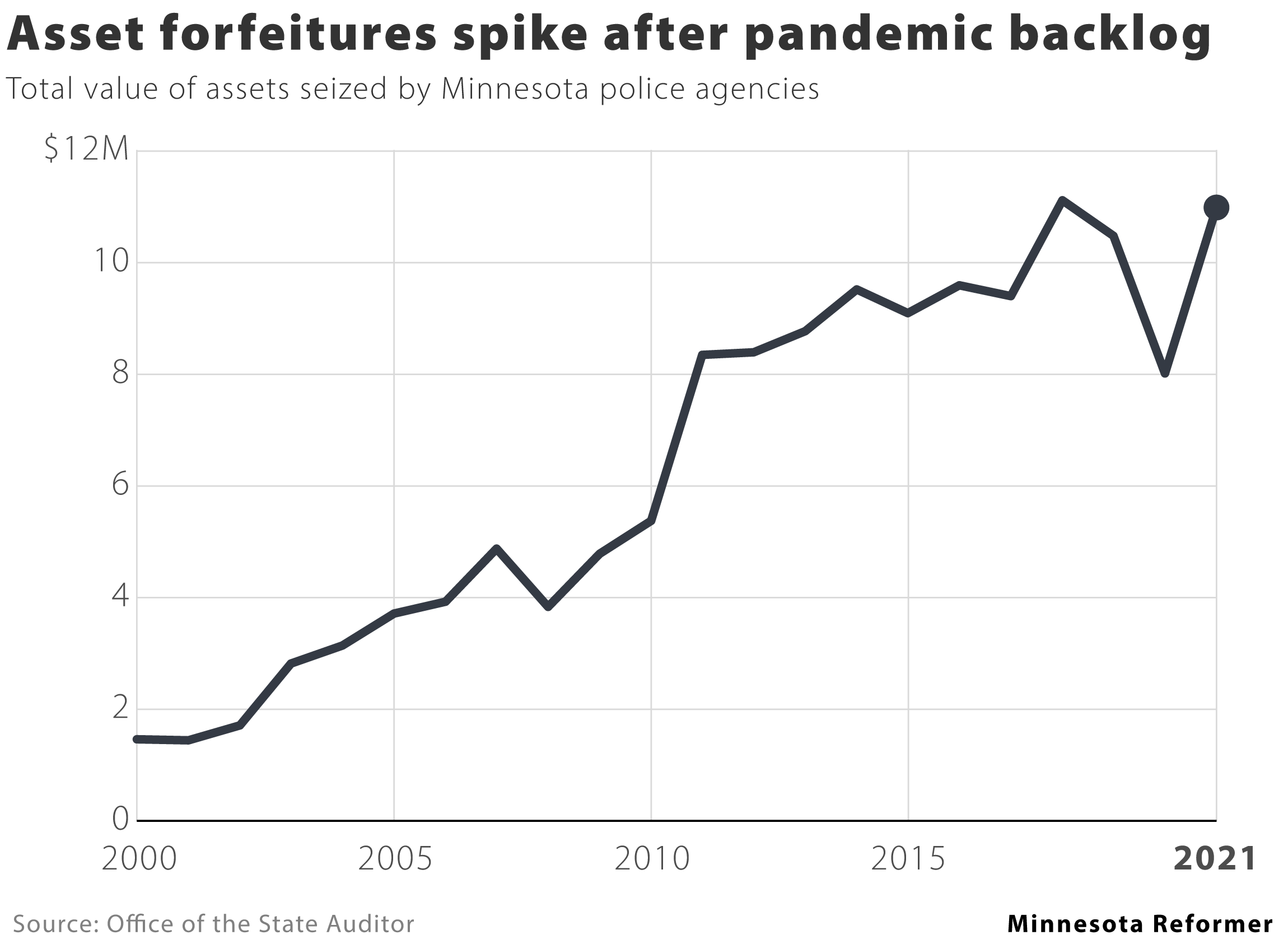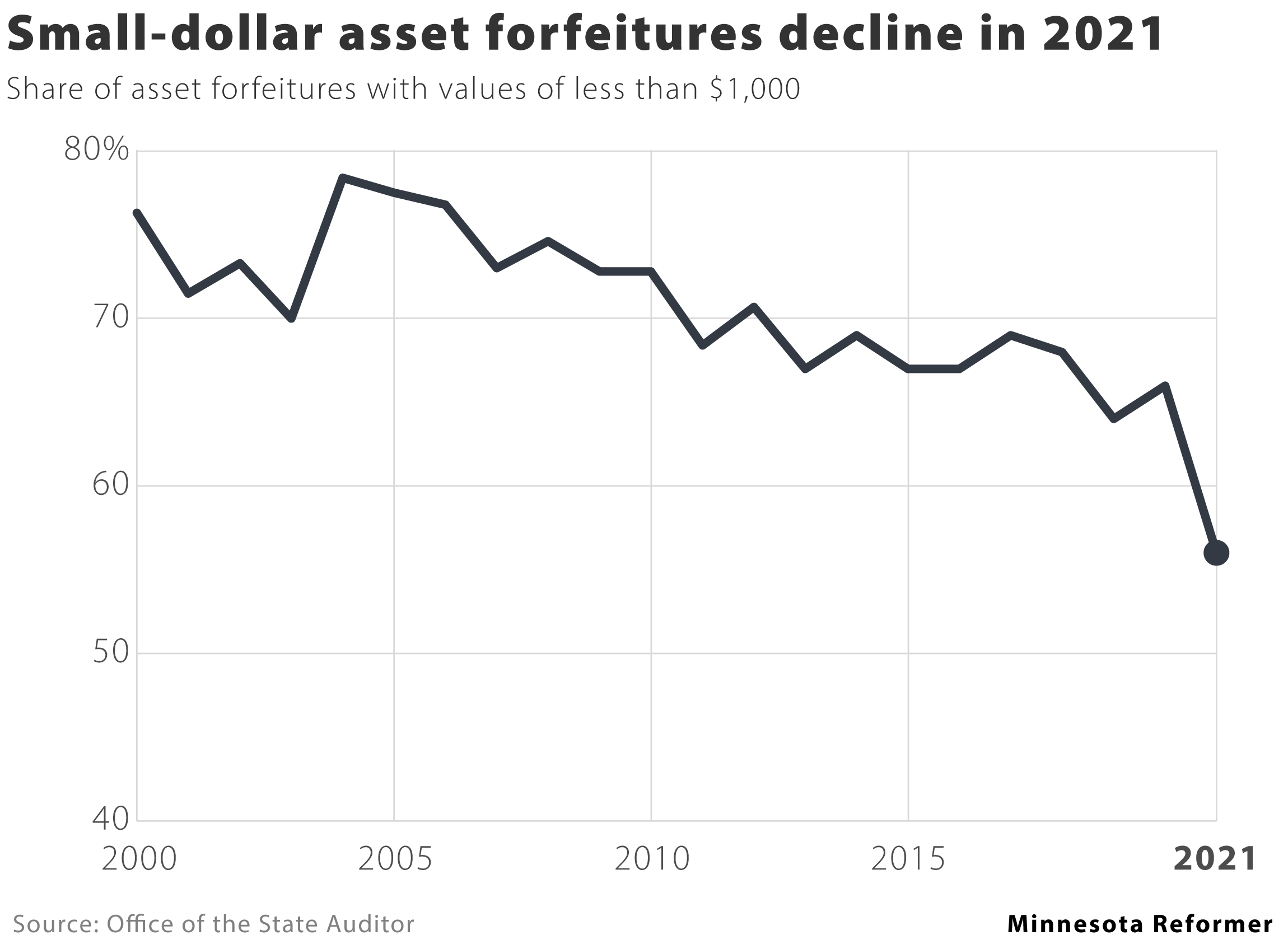Photo by Tony Webster/Minnesota Reformer.
In 2021, Minnesota law enforcement agencies took nearly $11 million in cash, vehicles and other property from people who, in many cases, were never convicted or even charged with a crime.
That figure comes from the latest annual report on asset forfeiture from the office of the state auditor. Forfeiture allows law enforcement agencies to seize and keep the assets of people suspected of criminal activity. Those assets are then divvied up between the police departments and prosecutors’ offices involved with the forfeiture.
“County attorneys do not need to charge or convict the property owner of a crime to take title/ownership of property,” explained Lee McGrath, an attorney at the Minnesota office of Institute for Justice, a civil liberties law firm.
In more than 80% of cases, he said, Minnesota property owners don’t challenge the forfeiture. In many instances that’s because the dollar value of the seized property is less than the attorney’s fees required to get it back.
“They default in the civil litigation,” McGrath said. “Then, ownership/title to the property is transferred automatically to the state.”
The practice has become more widespread in recent years. The total dollar value of property seized by authorities in Minnesota has increased roughly eightfold since 2000. An apparent lull in 2020 was a side effect of forfeiture proceedings being temporarily shut down as a result of the pandemic.

The rising prevalence of asset forfeiture has prompted increased scrutiny from media organizations and civil liberties groups, who have documented abuses of forfeiture authority across the country. Those reports have spurred legislators in some states to reform the practice. Last year in Minnesota, for instance, Gov. Tim Walz signed off on bipartisan legislation that, among other things, placed strict limits on when police can seize cash amounting to less than $1,500.
While that law didn’t take effect until 2022, there are signs in the 2021 data that some law enforcement agencies may have begun altering their practices in anticipation of the changes. The share of completed forfeitures involving less than $1,000 in property, for instance, dropped 10 percentage points to its lowest level in at least several decades.

Sub-$100 seizures also dropped to their lowest level on record, falling to 7% of all forfeitures from a high of 25% in the mid-2000s
The report also shows that cash and vehicles collectively account for nearly 90% of seized property in 2021, similar to prior years. The bulk of forfeiture cases involved DUI or drug offenses. Data on convictions or criminal charges associated with seizures was not available.
The state auditor’s report only reflects forfeitures carried out under state law. Property forfeited under federal law isn’t included. Separate federal data shows that for fiscal year 2021, Minnesota authorities made an additional $8 million in deposits to the Department of Justice’s asset forfeiture fund, and another $500,000 to the Treasury Department’s fund.
The post Minnesota law enforcement seized $11 million in assets in 2021 appeared first on Minnesota Reformer.
